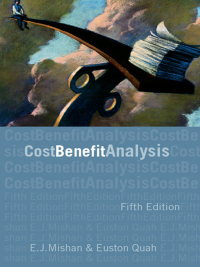





Automotive Products (AP) designs and produces automotive parts. In 2017, actual manufacturing overhead is $280,000. AP's simple costing system allocates manufacturing overhead to its three customers based on machine-hours and prices its contracts based on full costs. One of its customers has regularly complained of being charged noncompetitive prices, so AP's controller Devon Johnson realizes that it is time to examine the consumption of overhead resources more closely. He knows that there are three main departments that consume overhead resources: design, production, and engineering. Interviews with the department personnel and examination of time records yield the following detailed information: (Click the icon to view the information.) Read the requirements. Requirement 1. Compute the manufacturing overhead allocated to each customer in 2017 using the simple costing system that uses machine-hours as the allocation base. Determine the formula needed to calculate overhead using the simple costing method and then calculate AP's manufacturing overhead rate for 2017. (Round your answer to the nearest cent.) = | Manufacturing overhead rate per machine hour | Calculate the overhead allocated to each customer using the simple costing method. (Round your answers to the nearest whole dollar.) Machine Overhead Customer Hours Used Allocated Eastern Motors Holden Motors Jarrin Auto Usage of Cost Drivers by Customer Contract Eastern Holden Motors Motors Jarrin Auto Manufacturing Overhead in 2017 Department Cost Driver Design CAD-design-hours 150 250 100 Engineering Engineering-hours 35,000 25,000 220,000 130 100 270 Production Machine-hours 300 3,700 1,000 280,000 Total Requirement 2. Compute the manufacturing overhead allocated to each customer in 2017 using department-based manufacturing overhead rates. (Abbreviations used: Dept. = Department.) Determine the formula used to calculate the department-based manufacturing overhead rates: | = Manufacturing overhead rate by dept. AP's 2017 manufacturing overhead rates by department are as follows: Department Manufacturing Overhead Rate (by Department) per per Design Engineering Production Calculate the overhead allocated to each customer, by department, using the departmental manufacturing overhead rates calculated in the previous step. Calculate th total overhead cost for each department and each customer. Eastern Holden Jarrin Department Motors Motors Auto Total Design Engineering Production Total Requirement 3. Comment on your answers in requirements 1 and 2. Which customer do you think was complaining about being overcharged in the simple system? | the new department-based rates are used to price contracts, which customer(s) will be unhappy? How would you respond to these concerns? If the new Under the simple-costing system, V was likely unhappy about their bill, because the contract appears to have been department-based rates are used to price contracts, V will likely be happier about their bill. If the new department-based rates are used to price contracts, V will likely be unhappy. This is because their bills under the simple-costing system appear to have been . Using the department-based rates, their bills will be If the new department-based rates are used, AP should explain to the unhappy customers how the calculation was done, and point out their high use of V relative to Requirement 4. How else might AP use the information available from its department-by-department analysis of manufacturing overhead costs? (Select all that apply.) Other than for pricing, AP can also use the information from the department-based system O A. to reevaluate employee pay scales. OB. to provide incentives to professional staff. c. to set targets over time to reduce both the consumption of each indirect resource and the unit costs of the resources. O D. to examine and streamline its own operations so that there is maximum value-added from all indirect resources. Requirement 5. AP's managers are wondering if they should further refine the department-by-department costing system into an ABC system by identifying different activities within each department. Under what conditions would it not be worthwhile to further refine the department costing system into an ABC system? O A. If significant costs are incurred on different activities within a department, but each activity has the same cost driver. OB. If a single activity accounts for a sizable proportion of the department's costs. O C. If there wasn't much variation among contracts in the consumption of activities within a department. OD. All of the above












